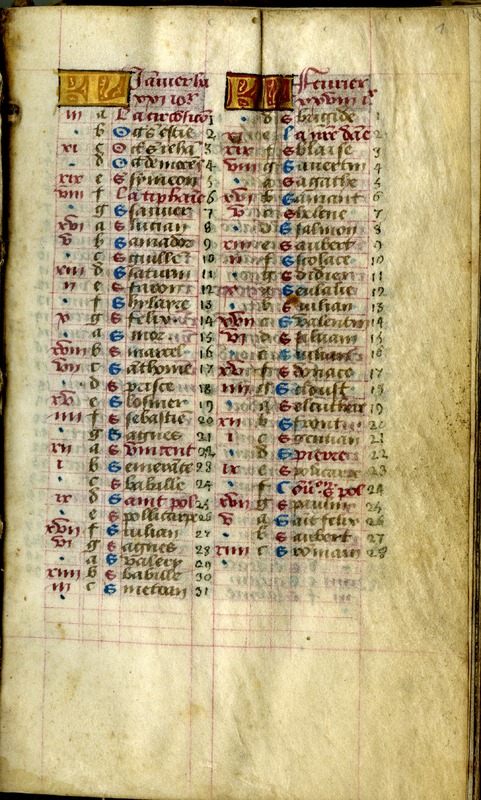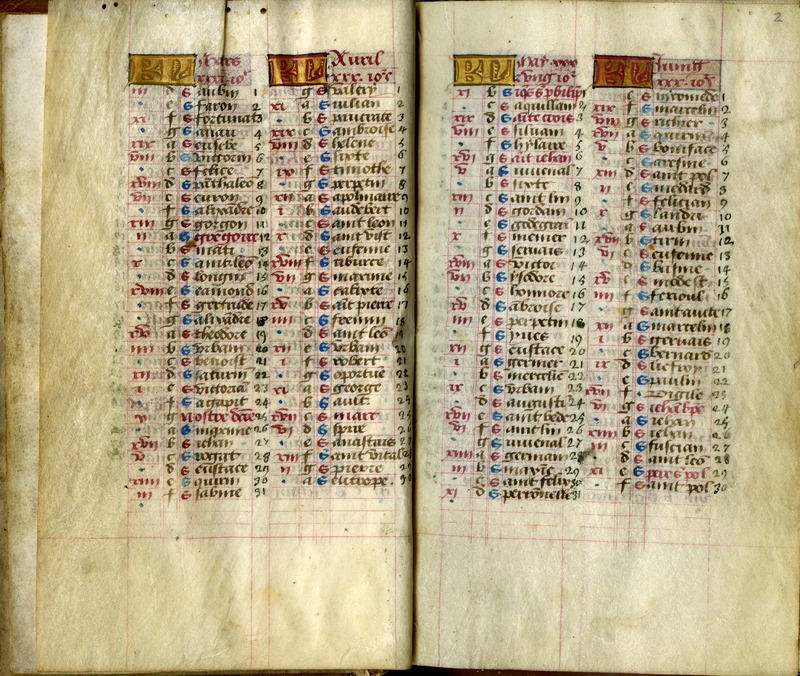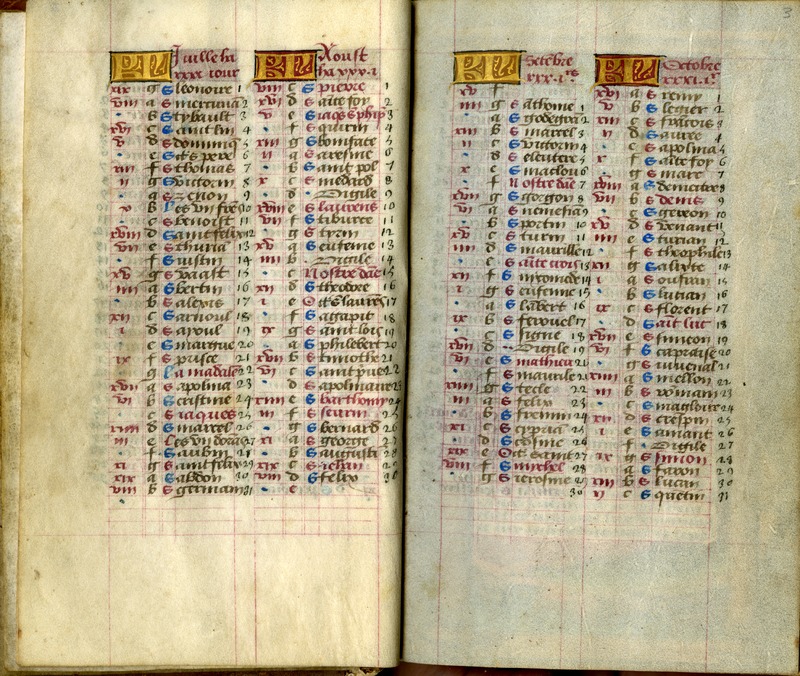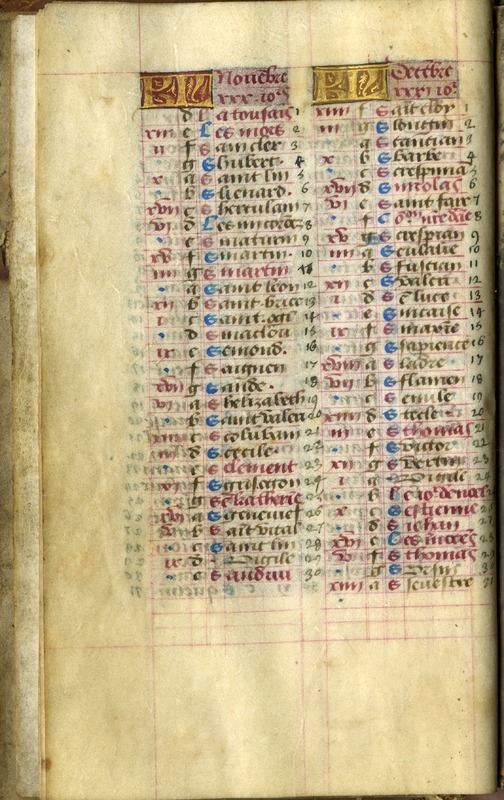Calendar
The liturgical calendar was a vitally important component in the type of Christian devotion which spawned the book of hours. The calendar itself simply lists the feast day for a saint or event for every day of the year, along with a guide to determine the dates of those feasts for each year. Especially important feasts were written in red ink, whence we derive the term "red-letter day". The particular feasts listed in the calendar could vary from book to book. Many days have feasts for more than one saint, and there were also moveable feasts, which could be inserted whereever there was a gap in the calendar. Some books, like the Stuart de Rothesay Hours (British Library, Add MS 20927), do not have every day on their calendars filled in. The differences between books could arise from the personal preferences of their owners, and from regional variations in religious practices. In particular, the feasts which were marked in red for their liturgical importance reflected the regional rite for which the calendar was made, called the use. There were uses for the major cities of Rome, Paris, and Sarum (the Latin name for Salisbury, center of English Christianity), but also for provincial cities like Bourges, Amiens, Troyes, and Reims.
Though the calendar in Lewis & Clark College's book of hours is fairly plain, calendars in other books of hours could be quite ornate, with distinctive artwork reflecting the tastes and status of the original owner. These calendars often featured different illustrations for each month. The signs of the zodiac were a frequent subject, as were the seasonal activities of peasants and nobles. The latter were frequently presented in contrast to one another. For a famous example of an illustrated calendar, see the Très Riches Heures of Jean, Duc de Berry (Musée-Condé, MS 56). Other fine examples can be found in the Hours of Joanna I of Castile (British Library, Add MS 18852), the London Rothschild Hours (British Library, Add MS 35313), and the Huth Hours (British Library, Add MS 38126).
January
January 1 - Circumcision of the Lord
January 6 - Ephiphany
January 22 - St. Vincent
January 25 - St. Paul
February
February 2 - Purification of Mary and Presentation of the Lord
February 22 - St. Peter
Feberuary 24 - Conversion of St. Paul
March
March 12 - St. Gregory
March 25 - Annunciation of the Lord
April
April 25 - St. Mark the Evangelist
May
May 1 - Apostles Jacob and Phillip
May 3 - Ascension of the Lord
May 6 - St. John
June
June 24 - Nativity of St. John the Baptist
June 29 - Ss. Peter and Paul
July
July 22 - Mary Magdalene
July 25 - St. James
August
August 1 - St. Peter in Chains
August 3 - Ss. James, brother of Jesus, and Philip
August 10 - St. Lawrence
August 15 - Assumption of the Virgin Mary
August 24 - St. Bartholemew
August 25 - St. Severin
August 29 - Beheading of St. John the Baptist
September
September 7 - Nativity of the Virgin Mary
September 13 - Exaltation of the Holy Cross
September 21 - St. Matthew the Apostle
September 28 - St. Michael the Archangel
October
October 9 - St. Denis
October 18 - St. Luke the Evangelist
October 28 - St. Simon
November
November 1 - All Saints' Day
November 2 - All Souls' Day
November 11 - St. Martin of Tours
November 23 - St. Clement
November 25 - St. Katherine
November 30 - St. Andrew
December
December 6 - St. Nicholas
December 8 - Feast of the Immaculate Conception
December 21 - St. Thomas
December 25 - Nativity of the Lord
December 26 - St Stephen
December 27 - St. John the Apostle
December 28 - Feast of the Holy Innocents
December 29 - St. Thomas



